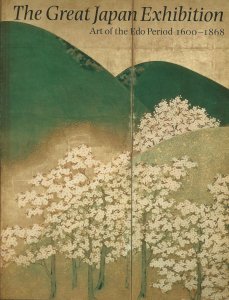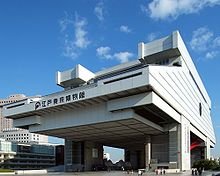Simanaitis Says
On cars, old, new and future; science & technology; vintage airplanes, computer flight simulation of them; Sherlockiana; our English language; travel; and other stuff
EDO TOGGLES AND MODELS
EDO IS the traditional name for Tokyo. The Edo period is also known as the Tokugawa Era, honoring Tokugawa Ieyasu, the first shogun of a clan that ruled Japan between 1603 and 1868. This period, lasting from Shakespeare’s time into the rule of Queen Victoria, was especially rich in Japanese art and culture.

Tokugawa Ieyasu, 1543 – 1616, founder of the shogunate ruling Japan from 1603 until 1868, an era of Japanese history known for its economic growth, relative stability and strict isolation.
Here I share two aspects of Edo art and culture. I learned of netsuke art from an exhibit at the Royal Academy of Arts London in 1981. Netsukes, or toggles, were an essential feature of Japanese attire. I learned about Edo culture from architectural models seen some two decades later at the Edo-Tokyo Museum. The museum continues as a recommended destination in today’s Tokyo. The London exhibition produced a catalog (if such a beautiful large-format 365-page book can be called a mere catalog).

The Great Japan Exhibition: art of the Edo Period 1600-1868, edited by Professer William Watson, Royal Academy of Arts London in association with Weidenfeld and Nicolson London, 1981.
Together with arts and culture, The Great Japan Exhibition offers insights into Edo society, politics and foreign relations. In his introductory essay, William Watson notes, “For the first time in Japanese history the mercantile middle class (chōnin) became the most numerous and best-paying customers…. That class certainly knew what it liked and we have ever since enjoyed the verve and wit of the art it sustained…. A constant vigour runs through all the branches of Edo art.”
As an example of this art, a netsuke is a carved toggle attached to a cord to keep it from slipping out of a sash. Since Japanese clothing had no pockets, netsukes were important little bits of personal attire. Typically made of wood, ivory or lacquer, netsukes represented animals (including those of the zodiac), gods and mythical creatures, personages of Japanese legend or history and, last, of entertainment.

Netsuke figures from the Edo period, left to right. A zodiac tiger, fox as priest, ghost of a nun and Kabuki actor Danjurō IX.
The twelve zodiac creatures (can you name them? see below) numbered time of day, months of the year and the years themselves in a repeating cycle. Those born in the year of the tiger, 2010, for instance, would appreciate this tiger netsuke. It’s of wood, its eyes of mother-of-pearl with pupils of a darker material. I like its Alice’s Cheshire Cat smile, of sorts.
The fox has magical powers in Japanese legend, including transforming itself into a beautiful woman or Buddhist priest. This netsuke is also of wood. I admire its sly facial expression.
A ghost of a nun, another wood netsuke, rises above a gravestone marked “The Buddhist nun, Myōkō.” You won’t find feet on this netsuke: Japanese ghosts don’t have any; they float over the ground.
Kabuki and sumō wrestling were the most popular Edo entertainments. Families of actors had (and continue to have) honorific names passed from generation to generation. Danjūro IX was renowned for his Shibaraku aragoto role and also the Kenuki detective tale. This netsuke is a metal plate inlaid with copper, silver, gold and shakudō (a copper/gold alloy). Its case is wood with ivory himotoshi (cord fixtures).
The Metropolitan Edo-Tokyo Museum, opened in 1993, is northeast of the Imperial Palace, across the Sumida River. The building is modeled after the elevated levels of a typical Japanese warehouse. Its logo represents the eye of an Edo-era kabuki character as seen in a dramatic mie pose.
Permanent exhibits describe 400 years of Edo/Tokyo through the Edo, Meiji and Shōwa Eras. These include a full-size replica of the Nihonbashi Bridge. The bridge’s newel posts at either end inspired the museum’s mascot, Gibo-chan (a giboshi is his onion-shape headdress).

Gibo-chan and his inspiration, one of the newel posts on the Nihonbashi Bridge. Images from Metropolitan Edo-Tokyo Museum.
I was able to visit the Edo of Tokugawa Ieyasu by virtue of the museum’s architectural models, complete with neighborhoods, buildings and people. Headphone audio guides in Japanese, English, Chinese or Korean provide details. Many of the exhibits carry multi-language placards too.

The Kamiyashiki of Matsudaira Tadamasa, 1/30-scale model. Image by Gryffindor stitched by Marku1988.
Matsudaira Tadamasa, 1597 – 1645, resided in this large residential complex located in front of the Ōtemon Gate of Edo Castle. The residence had an elaborate gate of its own, reserved for the shogun.
The Mitsui Echigo-ya kimono shop was founded in 1673. Not only did I see its 1/10-scale model at the Edo-Tokyo Museum, but I also visited its modern evolution, the giant Mitsukoshi Department Store in today’s Nihonbashi.
Last, the twelve characters of the zodiac are the Rat (4 mod 12), Ox (5 mod 12), Tiger (6 mod 12), Hare (7 mod 12), Dragon (8 mod 12), Snake (9 mod 12), Horse (10 mod 12), Sheep (11 mod 12), Monkey (0 mod 12), Rooster (1 mod 12), Dog (2 mod 12) and Boar (3 mod 12).
What’s this “mod 12” jazz? The topic of modular arithmetic is for another day. ds
© Dennis Simanaitis, SimanaitisSays.com, 2015



